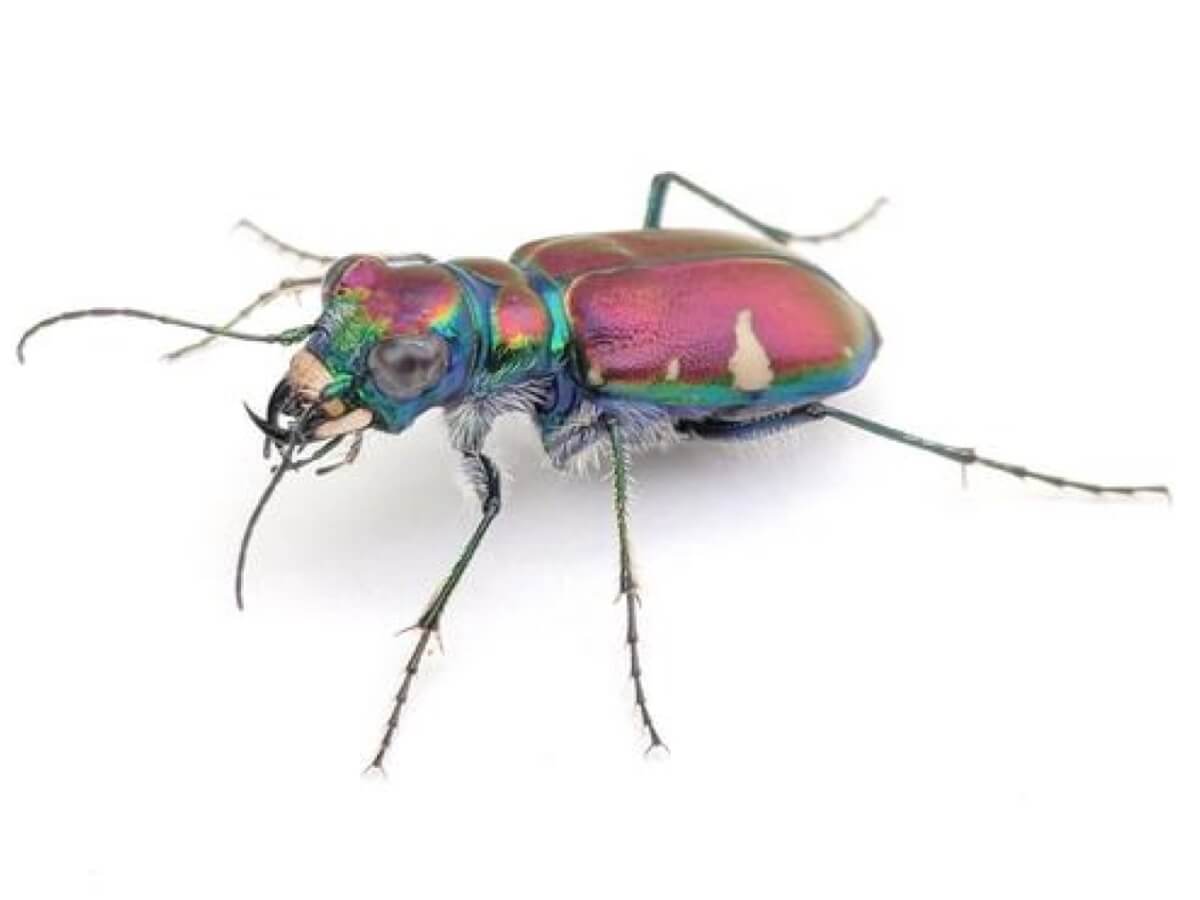
Many tiger beetles that are active at night produce a high-pitched, ultrasonic warning signal to ward off bats. (CREDIT: Harlan Gough)
GAINESVILLE, Fla. — In the dead of night, a fierce battle rages in the skies. On one side are bats, armed with ultrasonic sonar that allows them to hunt with deadly precision. On the other side is a surprising array of insects, each employing unique strategies to avoid becoming a bat's next meal. Among these insects are tiger moths, which produce ultrasonic clicks to warn bats of their toxic taste. However, a new study has uncovered an unexpected player in this nocturnal arms race: the tiger beetle.
Researchers from the University of Florida and Boise State University have discovered that certain species of tiger beetles also emit high-pitched sounds when attacked by bats. This finding has long baffled scientists because tiger beetles are not closely related to moths. So why and how would they evolve such a similar defense mechanism?
“It's such a foreign idea to humans: these animals flying around at night trying to catch each other in essentially complete darkness, using sound as their way of communicating,” says lead author Harlan Gough, who conducted the research during his doctoral studies at the Florida Museum of Natural History, in a media release.
To investigate this mystery, the research team held a series of experiments. First, they collected 19 different species of tiger beetles from southern Arizona and exposed them to recordings of bat echolocation calls in the lab. The findings published in Biology Letters found that seven of these beetle species responded by producing ultrasonic clicks, with frequencies that closely matched the sonar frequencies used by local bats.
But making sounds isn't enough to deter a hungry bat - the sounds need to convey a message. Many sound-producing insects, like tiger moths, use their clicks to advertise their toxicity. In essence, they're saying, “Don't eat me. I taste terrible!” This strategy, known as “acoustic aposematism,” is similar to the bright colors used by some poisonous frogs and butterflies to warn potential predators.
To test if tiger beetles were using the same approach, the researchers offered several sound-producing beetle species to captive big brown bats. Surprisingly, the bats readily consumed around 95 percent of the beetles, indicating that despite their acoustic warnings, these beetles were not actually toxic or unpalatable.

So, if the beetles aren't truly toxic, why bother making warning sounds at all? The researchers propose that tiger beetles are engaging in a cunning form of acoustic deception known as Batesian mimicry. In this type of mimicry, a harmless species (the mimic) evolves to imitate the appearance, sounds, or smells of a truly toxic or unpalatable species (the model). By fooling predators into thinking they are dangerous, the mimics gain protection without investing in costly chemical defenses.
To confirm their suspicions, the researchers compared the acoustic properties of tiger beetle and tiger moth warning sounds. Using specialized software, they analyzed the clicks' duration, dominant frequency, and duty cycle (the percentage of time the sound is “on”). Remarkably, the analysis revealed that tiger beetle sounds were nearly indistinguishable from those of toxic tiger moths found in the same area.
“Responding to bat echolocation is a much less common ability than just being able to hear echolocation,” Gough explains. “Most moths aren’t singing these sounds through their mouths, like we think of bats echolocating through their mouth and nose. Tiger moths, for example, use a specialized structure on the side of the body, so you need that structure to make ultrasound as well as ears to hear the bat.”
This discovery sheds new light on the complex world of predator-prey interactions and the evolutionary arms race between bats and insects. It also highlights the incredible diversity of acoustic strategies employed by insects to navigate a perilous nocturnal landscape.
For tiger beetles, the ability to mimic toxic moths likely evolved as a life-saving adaptation. Bats are a major predator of night-flying insects, capable of consuming up to their body weight in prey each night. By convincing bats that they are unpalatable, sound-producing tiger beetles can avoid becoming a snack, even if they don't have the chemical defenses to back up their claims.
Interestingly, not all tiger beetles engage in this deceptive behavior. The researchers found that diurnal species, which are active during the day and rely on vision to hunt, do not respond to bat calls.
“If you get one of those tiger beetles that goes to sleep at night and play bat echolocation to it, it makes no response at all,” Gough notes. “And they seem to be able to pretty quickly lose the ability to be afraid of bat echolocation.”
The implications of this research extend beyond just tiger beetles and moths. Many other insect groups, such as crickets, katydids, and mantises, have evolved ultrasonic hearing to detect bat sonar. It's likely that some of these insects also use sound to deter bats, either through genuine acoustic aposematism or through mimicry like the tiger beetles.
This study also underscores the importance of considering both visual and acoustic cues when studying animal communication and defense strategies. While the bright colors and bold patterns of many toxic insects have long been recognized as warning signals, the role of sound in predator deterrence has received less attention.
By unraveling the acoustic deceptions of tiger beetles, Gough and his colleagues have opened up a new frontier in the study of insect defenses and predator-prey dynamics. As research continues in this area, we may uncover even more surprising examples of acoustic mimicry and learn more about the crucial role of sound in the nightly battle between bats and insects.
EdNews Editor-in-Chief Steve Fink contributed to this report.










